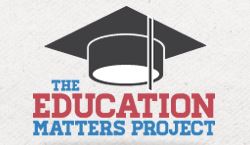Good Friday … For Labor and Job Statistics
 The US economy added 162,000 jobs in March, the biggest net gain in over three full years. That’s good news right? Well, that depends on who you ask. Some say that it’s clearly good news, and that we’re finally moving in the right direction. But others say that the stats are superficial, and that they don’t address the underlying economic issues. I’m not sure what the real answer is, but one thing is for sure. The job market does seem to have a little bit more life. And sometimes, momentum can be a good thing.
The US economy added 162,000 jobs in March, the biggest net gain in over three full years. That’s good news right? Well, that depends on who you ask. Some say that it’s clearly good news, and that we’re finally moving in the right direction. But others say that the stats are superficial, and that they don’t address the underlying economic issues. I’m not sure what the real answer is, but one thing is for sure. The job market does seem to have a little bit more life. And sometimes, momentum can be a good thing.
Former Federal Reserve Chairman Alan Greenspan recently agreed in an interview with Businessweek and said “there’s a momentum building up†in the U.S. economy and the odds of it faltering have “fallen very significantly.â€Â The Obama administration agreed. White House economic adviser Lawrence Summers said that “job creation will accelerate.” And Christina Roemer, chair of the White House’s Council of Economic Advisers, said suggested that there’s a “gradual labor market healing.” And so it sounds like there may be a subtle wave of optimism that seems to be lingering.
That is definitely the case at business schools, where although recruiting numbers may be slightly down [(i) I don’t know for sure and (ii) It’s not over yet], they won’t be down by much. And during recruiting season, the students seemed to be pretty confident about their chances. Some of the ones I know did well. Many will be working at banks, consulting firms, Fortune 500’s, and start-ups. Even at the law school, things seem to be trending upward. It’s harder to tell exactly how things will play out, since law schools tend to do the vast majority of recruiting in the fall. But the message I’ve heard from most firms and organizations is that things will at least be a little better. I look forward to reporting the real news this fall.
That said, I don’t think these stories are necessarily compelling.
1. First, the administration has the herculean task of managing the negative sentiment that came from the past two year and balancing that with a more optimistm to keep people motivated and working hard, all while delivering a message that’s both truthful and transparent.
2. And more importantly, it’s not necessarily compelling because (i) the world of MBAs and JDs headed to become consultants, bankers, lawyers, fund managers, and non-profit leaders doesn’t reflect the overall economy. In fact, it’s really only a small fraction of the economy. The average person doesn’t attend a top 10 law or a premier business school nor do they hunt for six-figure jobs in their mid twenties, if ever. So many times, that person may end up jumping through a lot more hoops to get to the “promise land” of finding employment. (ii) And not only do these individuals represent a small percentage of the overall economy but they also have the advantage of undergoing a highly sophisticated recruiting process that starts well before interview season begins. A process where employers have coffee chats, luncheons, mixers, and receptions months before recruiting ever begins. And a process where hundreds of employers accept resumes, come to campus, and interview dozens of students on campus, all day. And sometimes multiple days. So taking a step back and looking at everything from a 30,000-foot, big picture view, I see that it’s a privilege to have the process in place.
So with a 30,000-foot view in mind, here are the objective arguments about the labor force, from both sides.
1. One on hand, the hard numbers from BLS do suggest improvement. (i) In total, employers added 162,000 jobs in March, the biggest monthly gain in three years. That’s always a good starting point. (ii) Manufacturing payrolls have also reportedly increased. (iii) This story is also true for heath care employers, who added ~27,000 full-time jobs and ~40,000 private-sector temp jobs. (iv) Surprising is that construction field held steady for the first time, after losing nearly ~865,000 last year. (v) Further, sources also suggest that the investment banks are finally starting to breathe again, and that broadening their scopes of services has helped them to decrease risk and squeeze out more revenues. (vi) And finally the unemployment rate is still down to 9.7%.
2. On the other hand, context suggests that the grass may only look greener. (i) I suspect we’re all aware that the number of jobs and hence total payroll numbers continue to skydive in financial industry. Venture capital and entrepreneurship numbers also remain low. (ii) However, even the numbers that are improving, according to US News, may really be more related to a reduction in labor force than an improving economy. (iii) But despite these more nuance calculations, even real growth number, according to some sources, are lower than expected. For example, forecasters expected ~200,000 new jobs in March, not 162,000. And that’s in spite of the fact that BLS reported more census takers this year than usual. Not only does that potentially positively change the accuracy of the reporting of the numbers but it also increases the number of actual jobs created. And coincidentally, these happen to be six-month temporary jobs, not full-time permanent jobs. While adding temp jobs is a good way for businesses to pick up and a good way for folks to earn a bit of cash, it also may not be indicative of any real economic trend.
In a recent post, Former Secretary of Labor said something similar. Rob Reich said “These are six-month temp jobs, and they tell us nothing about underlying trends in the labor market. It’s hard to gauge precisely how many were hired — probably between 100,000 and 140,000, although some estimates put the hiring as low as 48,000. Almost a million census workers will need to be hired over the next few months. Subtract these, and today’s job numbers are good but nothing to write home about.”
Conventional wisdom pinpoints that demand for such temporary employees increases during recessions and during recoveries, so employers can get the help they need, while also shining a spotlight on their budgets and reigning in expenditures. This may mean that we’re still somewhere in the middle. Either way, there’s still a lot of uncertainty and unfortunately, nobody has the million dollar crystal ball to lead us into the future.
In light of that, I think I like some of the positive signs. After all, psychology plays a big part in market movements and perhaps a bigger one in its recoveries. There are a lot of different ideas and competing opinions out there, a few are from experts, a good number from those who have agendas, a lot with a different perspectives than you or I have, and most of them with different levels and sources of research.
And in the end, how you frame the issues will affect [and possibly even change] your viewpoint.
No comments yet.






